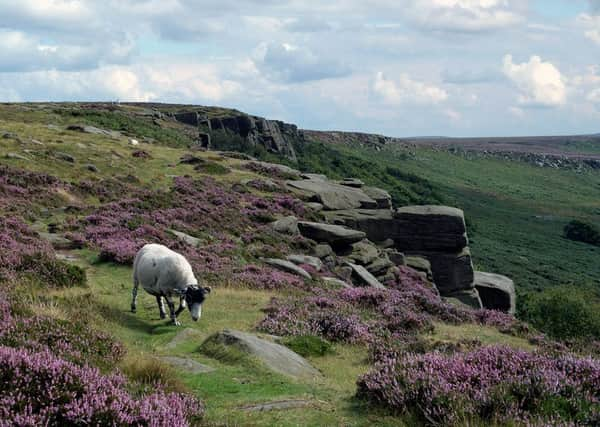Upland farmers face biggest shake up in a generation


The message comes ahead of changes to European payments which are awarded to farmers for managing their land in prescribed ways to enhance nature as part of so-called agri-environment programmes.
To embrace the current system, many upland farmers have significantly reduced their productive capacity, introducing low-input grassland management and reducing stock numbers.
Advertisement
Hide AdAdvertisement
Hide AdHowever, the new payments scheme - called Countryside Stewardship - due to come into effect later this year as part of Common Agricultural Policy reforms makes the criteria for receiving funding more specific and less applicable to all.
With many upland farmers expecting to receive reduced payments, many are seeking ways of increasing their productivity, and reviving grassland so it is suitable for grazing is a particular challenge.
Incomes will also be hit by lower direct payments - paid to all farmers - as a result of a smaller agricultural budget set by the European Parliament.
The challenges facing the sector will be discussed at the Northern Uplands Conference in Skipton tomorrow; an event organised by the National Farmers’ Union (NFU) and beef and sheep levy payers’ group EBLEX.
Advertisement
Hide AdAdvertisement
Hide AdJames Copeland, regional environment and land use adviser for the NFU, said: “Historically we’ve had a lot of support for the uplands through CAP. Now, with the new Countryside Stewardship Scheme, the certainty of getting into an agri-environment agreement isn’t there.
“What we are saying to farmers in the uplands is if an opportunity arises to do something slightly different, it may be worth looking into it.”
David Airey, a sheep farmer at Sutton in Craven near Keighley farms land that reaches up to 1,400 feet above sea level.
He said he was turning to the marketplace to boost his income, a move started when one of his sons, Matthew, returned to the farm to work alongside him about three years ago.
Advertisement
Hide AdAdvertisement
Hide Ad“We planned what we wanted to achieve which was breeding more sheep and improving them so we could get more for them in the marketplace,” Mr Airey said.
“We know there will be less subsidy in the next four or five years because of the way the CAP reform was negotiated so we have tried to adapt.”
He said making his land more suited to grazing had been.
“Having been in environmental schemes for the last 20 years, I’ve probably looked at the land with a view to mothballing it for another generation to come along and start it again but unfortunately this is to the detriment of the heart of the land. We found our land was short on vitality and basic nutrients.
“We were lambing 1,700 sheep 30 years ago and we halved the flock when environmental stewardship came in. Because of the changes this year, we have to become farmers again but not at the expense of the environment.”
Advertisement
Hide AdAdvertisement
Hide AdRobin Milton, the NFU’s national uplands spokesman, said hill farmers should consider a range of ways of boosting their income.
“I don’t think there is one right answer. Individual farmers have to make individual decisions.”